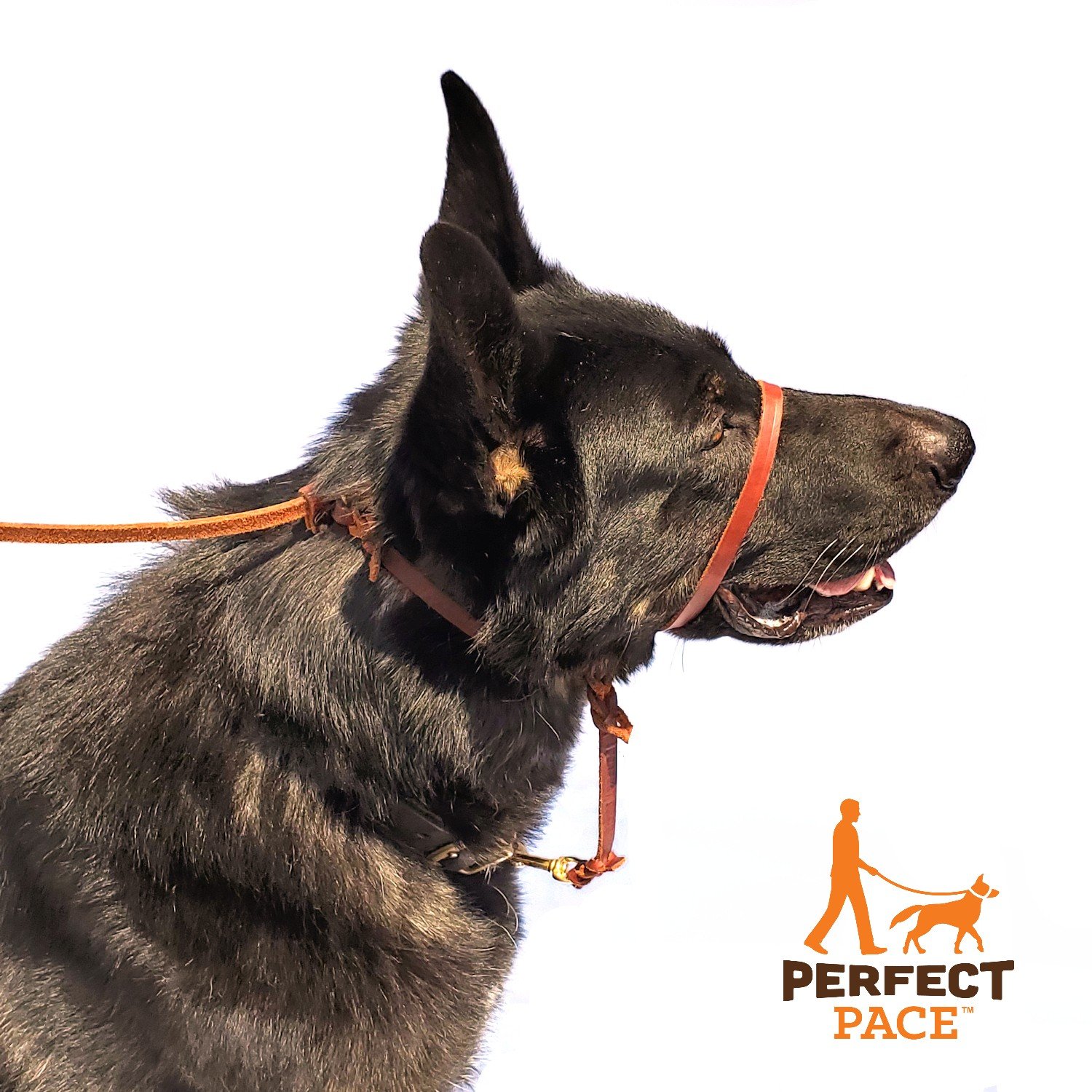Dog leash training can be challenging if your dog pulls on the leash. To address this issue, place something enticing, like a toy, on the floor and encourage your dog to walk towards it.
If your dog pulls on the leash, immediately stop and call them back to you. Reward your dog with access to the toy when they walk on a loose leash. This teaches them that pulling slows them down and that walking on a loose leash is rewarding.
By following these steps, you can effectively train your dog to stop pulling on the leash.

Credit: m.youtube.com
Understanding Dog Leash Training
Understanding dog leash training is essential for dealing with your dog’s pulling behavior. Instead of starting with commonly overused phrases, focus on teaching your dog to walk calmly on a leash by redirecting their attention and rewarding them for walking on a loose lead.
Why Dogs Pull On The Leash
Dogs pulling on the leash is a common behavior that many pet owners experience. There are several reasons why dogs pull and understanding these reasons is crucial in addressing the issue. One reason is that dogs are naturally curious and want to explore their surroundings. They are excited to be outside and everything becomes a potential distraction for them. Another reason is that dogs are born pullers. They instinctively pull against resistance, which is why they might pull on their leash when they feel the tension.
The Problem With Short Leashes
Using a short leash can exacerbate the problem of dogs pulling. When the leash is short, it restricts the dog’s movement and limits their ability to explore. This restriction can cause frustration and lead to more pulling. Short leashes also give the dog less control and can put strain on their neck, leading to discomfort and potential injury. It is important to understand that the problem is not the dog but rather the equipment being used.
The Importance Of Using The Right Equipment
Using the right equipment is crucial in addressing the issue of dog pulling. The proper equipment can make a significant difference in a dog’s behavior and overall experience during walks. One of the most recommended tools for leash training is a harness. A harness distributes the pressure evenly across the dog’s body, relieving strain on their neck and preventing discomfort. It also allows for better control and ensures the dog cannot slip out of the leash.
Another option to consider is a front-clip harness, which helps redirect the dog’s pulling. The front-clip attachment on the harness decreases the dog’s ability to pull forward, making it easier for the owner to regain control. Using a long leash or a retractable leash can also be beneficial, as it gives the dog more freedom to explore while still maintaining control. However, it is important to remember that these tools are aids, and proper training is still necessary to address the underlying pulling behavior.
In conclusion, understanding dog leash training and the reasons behind a dog’s pulling behavior is essential in finding a solution. Using the right equipment, such as a harness, can greatly improve the dog’s comfort and control during walks. By implementing proper training techniques and providing a positive reinforcement-based approach, owners can effectively address and overcome their dog’s pulling behavior.
Effective Techniques For Leash Training
Effective leash training is essential for every dog owner. If your furry friend tends to pull on the leash during walks, don’t worry – there are several techniques you can use to address this behavior and enjoy more pleasant walks together. In this blog post, we will explore three effective techniques for leash training that can help you overcome your dog’s pulling habits.
The Tree Method For Leash Pulling
One effective technique for leash training is the tree method. This method involves stopping dead in your tracks and standing still like a tree whenever your dog starts pulling on the leash. By not giving in to your dog’s pulling, you are teaching them that pulling will not get them any further. Stay still and wait until your dog relaxes and releases tension on the leash. Once they do, you can continue your walk. Repeat this process every time your dog pulls, and they will soon learn that pulling is an unproductive behavior.
Using Positive Reinforcement
Another effective technique for leash training is using positive reinforcement. Whenever your dog walks calmly by your side without pulling, reward them with praise, treats, or a favorite toy. Positive reinforcement will help your dog associate walking calmly with pleasant experiences and encourage them to continue displaying the desired behavior. Be consistent in rewarding your dog whenever they walk nicely on the leash, and they will soon learn to associate walking calmly with rewards.
Redirecting Attention When The Dog Pulls
Redirecting your dog’s attention is another useful technique for leash training. When your dog starts pulling on the leash, quickly change their focus by giving a cue, such as “sit” or “look.” As your dog follows the cue, reward them with treats and praise. By redirecting your dog’s attention to you, you are helping them understand that staying focused on you is more rewarding than pulling on the leash. With consistent practice, your dog will learn to pay attention to you during walks and reduce their pulling behavior.
Common Challenges And Solutions
Tired of your dog pulling on the leash during walks? Discover effective solutions to leash training challenges and learn what to do to stop your dog from pulling. Get valuable insights and techniques to teach your dog proper leash manners in a way that is both humane and effective.
Dealing With A Large Or Strong Dog
Training a large or strong dog to walk politely on a leash can be a daunting task. These dogs often have more physical strength, which can make it difficult to control their pulling. However, there are some solutions you can try:
- Invest in a sturdy, high-quality leash and harness to ensure you have a secure grip on your dog.
- Consider using a no-pull harness or head collar that provides better control and redirects the dog’s pulling force.
- Gradually increase your dog’s exercise to release pent-up energy before leash walking sessions.
- Break the training into smaller, manageable steps, rewarding your dog for any progress made.
Addressing Jumping On People
Another common challenge when leash training is a dog’s tendency to jump on people. This behavior can be not only frustrating but also dangerous. Here are some solutions to address this issue:
- Teach your dog the “sit” command and reinforce it consistently during walks to redirect their focus and prevent jumping.
- Practice controlled greetings by asking friends or family members to approach slowly and, if the dog jumps, have them turn and walk away.
- Use positive reinforcement, rewarding your dog with treats and praise when they exhibit calm behavior during interactions with people.
- Consider seeking help from a professional dog trainer who can provide personalized guidance and techniques to tackle jumping.
When Nothing Seems To Work
Despite your best efforts, sometimes leash training can be challenging, and it may seem that nothing is working. In such cases, try these additional strategies:
| Strategy | Description |
|---|---|
| Seek professional help | An experienced dog trainer can evaluate the specific challenges you’re facing and provide tailored solutions. |
| Use positive reinforcement | Reward your dog for small successes, encouraging them to repeat desired behaviors. |
| Be patient and consistent | Leash training takes time, and consistency is key. Keep practicing daily and remain patient with your dog’s progress. |
| Consider alternative equipment | Experiment with different types of leashes, harnesses, or head collars to find what works best for your dog. |

Credit: www.thewildest.com
Tips For Consistent Leash Walking
When it comes to dog leash training and dealing with pulling, consistent leash walking is key. Follow these tips to teach your dog to walk calmly on a leash without pulling.
Training Goals For Leash Walking
Consistent leash walking is an essential skill for every dog owner. It not only ensures the safety of your dog but also makes your walks more enjoyable. Setting specific training goals can help guide you and your dog towards success. When it comes to leash walking, some common training goals include:- Teaching your dog to walk politely without pulling
- Focusing on loose leash walking, where there is no tension on the leash
- Training your dog to walk at your pace, without lagging behind or rushing ahead
- Teaching your dog to stay on one side, such as the left or right
- Building your dog’s focus and attention on you during walks
Exercise Alternatives To Walks
If you’re unable to take your dog for a walk due to certain circumstances or weather conditions, there are alternative ways to provide exercise and mental stimulation. Some exercise alternatives to walks include:- Playing fetch or tug-of-war in a safe, enclosed area
- Setting up an obstacle course in your backyard or living room
- Engaging in interactive toy play, such as puzzle toys or treat-dispensing toys
- Participating in obedience training sessions or agility classes
- Going on supervised playdates with other friendly dogs
How Long Does It Take To Stop Pulling?
The time it takes to stop your dog from pulling on the leash can vary depending on various factors, such as your dog’s breed, age, temperament, and previous training experiences. Some dogs may respond quickly to leash training, while others may require more time and patience. On average, it can take several weeks to several months of consistent training to see significant improvements in your dog’s pulling behavior. Remember that consistency is key, and it’s essential to practice leash walking skills regularly, both during training sessions and on daily walks.Rewarding Your Dog For Good Behavior
Rewarding your dog for good behavior is an effective way to reinforce positive leash walking habits. By using rewards, you can motivate your dog to continue displaying the desired behavior. Rewards can include verbal praise, physical affection, treats, or a combination of these. When rewarding your dog, make sure to provide the reward immediately after the desired behavior occurs. This helps your dog associate the reward with the specific action. Additionally, vary the types of rewards you use to keep your dog engaged and interested. Remember, consistency is key. Make sure to reward your dog consistently for good behavior and gradually reduce the frequency of rewards as your dog becomes more proficient at leash walking.Avoiding Punishments And Negative Reinforcement
Train your dog to stop pulling on the leash without resorting to punishments or negative reinforcement. Instead, offer positive rewards and redirect their attention when they start pulling. By consistently practicing leash training techniques, you can have a well-behaved and enjoyable walking experience with your dog.
The Drawbacks Of Punishment
Using punishment as a training technique for dog leash pulling may seem like a quick fix, but it has several drawbacks. Punishments such as leash corrections, yanking, or shouting at your dog can cause fear, anxiety, and aggression. This can lead to a negative association with the leash and walking, making the problem worse in the long run. Punishment can also damage the bond between you and your furry friend, eroding trust and creating stress in your relationship.Rewriting The Dog’s Association With Pulling
Instead of relying on punishments, it is important to focus on rewriting your dog’s association with pulling. This means creating positive experiences and reinforcing desired behaviors. One effective technique is counterconditioning, which involves pairing the pulling behavior with something pleasant, like treats or praise. By doing this consistently, your dog will start to associate loose leash walking with positive outcomes, making them more likely to repeat the behavior.Training Tips From The Rspca
The Royal Society for the Prevention of Cruelty to Animals (RSPCA) offers valuable tips for leash training without punishments. Here are some techniques they recommend:- Start with short sessions: Begin with short walks in a quiet area to avoid overwhelming your dog. Gradually increase the duration and complexity of the walks as your dog becomes more comfortable.
- Use rewards and praise: Reward your dog with treats, toys, or praise whenever they walk calmly on a loose leash. This positive reinforcement encourages them to continue exhibiting the desired behavior.
- Try clicker training: Clicker training can be an effective way to communicate with your dog during leash training. Pair the sound of the clicker with treats to mark and reinforce the desired behavior.
- Be patient and consistent: Leash training takes time and patience. Consistency is key, so practice leash walking in different environments to help your dog generalize the behavior.

Credit: www.amazon.com
Frequently Asked Questions On Dog Leash Training: What To Do About Your Dog’s Pulling
How Do You Train A Dog To Stop Pulling On The Leash?
To train a dog to stop pulling on the leash, place something enticing on the floor, like a toy. If the dog pulls towards it, stop and call them towards you. Reward them with the toy when they walk on a loose leash.
This teaches them that pulling slows things down. Avoid using punishment like tightening a head collar or harness, as it may not be effective for some dogs.
How Do You Punish A Dog For Pulling On A Leash?
To punish a dog for pulling on a leash, tighten the strap of a head collar or training harness. However, this may not work for all dogs. Another approach is to place something desirable on the floor and when the dog pulls, stop and call them towards you.
This teaches the dog that pulling slows things down.
How Do You Stop A Leash Pulling Positive Reinforcement?
To stop leash pulling, place something enticing on the floor. When your dog pulls towards it, stop and call them to you. Reward them with the desired item for walking on a loose leash. This teaches them that pulling slows things down.
Tightening the strap of a head collar or training harness can also be used as punishment.
Do Dogs Grow Out Of Leash Pulling?
Dogs may not naturally grow out of leash pulling. Train them to walk on a loose leash by rewarding them for walking calmly.
Conclusion
To effectively tackle your dog’s pulling during leash training, it’s crucial to prioritize consistency, positive reinforcement, and patience. By redirecting their attention and rewarding desirable behavior, you can teach your furry friend the importance of walking on a loose leash.
Remember, punishment may not always yield the desired results and can be counterproductive. Stay committed to the training process and enjoy the rewarding experience of walking your dog with ease and control.







